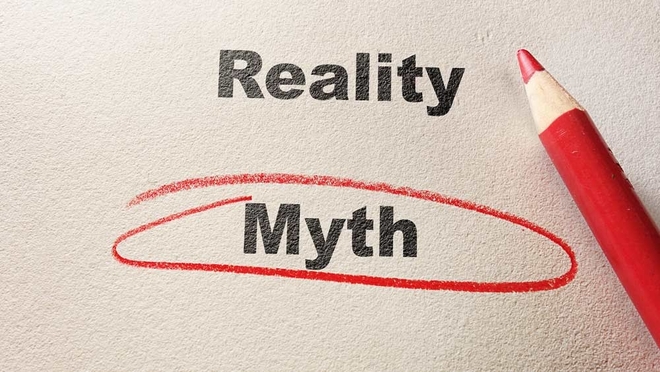
People often believe that a company's share price tells a lot about it. For instance, many retail investors buy penny stocks because they are assumed to be cheap or might help them get more shares. But do share prices reflect a company's actual value? Let's find out.
Myth 1: Share price reflects the size of a company
Many investors attribute share price as the correct indication of a company's size. We could not think of a better example to burst this myth than comparing Reliance Industries , the largest Indian conglomerate, and MRF, the company with the highest price per share.
While the shares of Reliance Industries and MRF currently trade at Rs 2,351 and Rs 1,09,000, respectively, Reliance's market capitalisation is about 35 times that of MRF. Market capitalisation is the company's total value or the amount that an investor has to pay to buy 100 per cent shares of that company.
The vast difference in the share price of both these companies is a result of the number of shares issued. At present, Reliance has more shares outstanding than MRF. As a result, its market capitalisation is higher than that of MRF.
Myth 2: Share price tells whether a company is cheap or expensive
If one had to compare the share prices of Bajaj Auto and TVS Motor in the two-wheeler space, one might think Bajaj Auto is a more expensive company to buy. But to check whether a stock is expensive, investors must look at valuation metrics such as price-to-earnings (P/E) and price-to-book value (P/B) rather than the share price alone.
Valuation metrics
TVS Motor trades at an expensive valuation when compared with Bajaj Auto
| Share price | P/E | P/B | |
|---|---|---|---|
| Bajaj Auto | 5052 | 21 | 4.6 |
| TVS Motor | 1600 | 52 | 12.7 |
As we can see, while Bajaj Auto has a higher share price than TVS Motor, the latter is more expensive based on valuations.
Myth 3: Bonus issues and stock splits increase shareholder value
It is a common assumption among many investors that bonus issues and stock splits increase a company's market cap, but this is far from the truth. For example, if a company's share price is Rs 100 with 1,000 shares outstanding, the stock's market cap will be Rs 1,00,000. If the company announces a bonus of 1:1, it issues one share for every share an investor holds. If the number of shares increases to 2,000, the share price will halve to Rs 50. But the market cap will stay the same at Rs 1,00,000. The same concept applies to stock splits.
Myth 4: An increase in market value is the same as the increase in share value
Since market capitalisation is the share price multiplied by the number of shares outstanding, it does not necessarily mean that the change in market cap is only due to a change in share prices. A company's number of outstanding shares may increase due to raising additional funds for business growth (or for any other reason) by issuing new shares, or it can decrease due to share buybacks. Thus, we set out to find companies with significant differences in share price growth and market cap growth in the last ten years.
Value creation
For the company or investors?
| Company | 10Y share price growth (%) | 10Y market cap growth (%) | 10Y shares outstanding growth (%) |
|---|---|---|---|
| Punjab National Bank | -16 | 424 | 2941 |
| UCO Bank | -30 | 1013 | 1078 |
| Union Bank Of India | -12 | 988 | 1076 |
| Central Bank Of India | -3 | 702 | 543 |
| Indian Overseas Bank | -6 | 1824 | 1430 |
| As on September 25, 2023 | |||
Interestingly, most companies in the list were public sector banks because the government had to infuse massive funds into these banks during the last decade. Most public sector banks reported huge bad loan numbers, resulting in losses, which led to a decline in their capital ratios. To keep them afloat, companies had to raise funds, that too, at lower prices, leading to an increase in their number of shares.
So, next time, remember, if any company's management boasts of increasing the company's value, make sure to check the share price returns for the same period. The management may not see shareholder value as the topmost priority.
Also read: The book value myth








